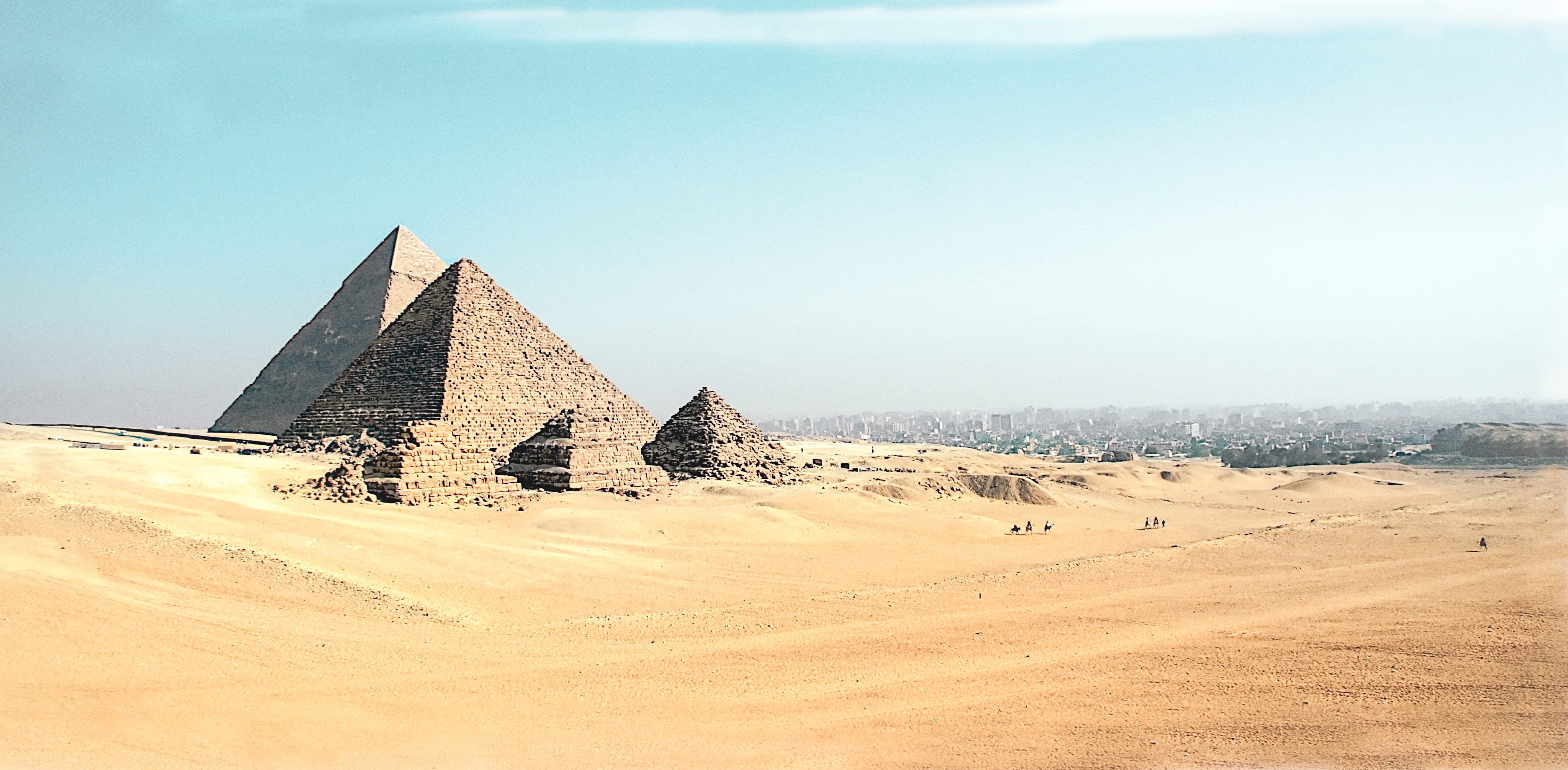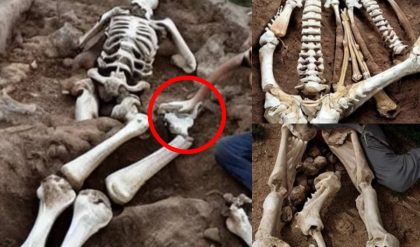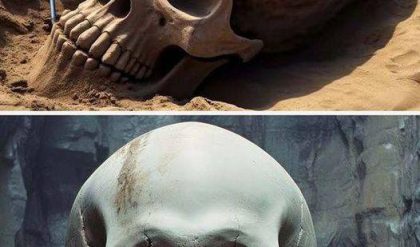The Great Pyramid of Giza is a huge pyramid built by the ancient Egyptians. It stands near Cairo, Egypt, and it is the last remaining Wonder of the Ancient World. When it was built, it was 147 metres tall, and it was the tallest building in the world for over 3,800 years.
The pyramid was built for Khufu, an Egyptian pharaoh. It is thought that Khufu’s vizier (his closest advisor), Hemiunu, was the architect of the structure. It is believed that it took more than 50,000 workers about 20 years to build, and was completed around 2570 BC.
When it was built, the Great Pyramid was covered by bright white stones that formed a smooth outer surface. Although most of the stones were lost over time, the majority of what can be seen of the pyramid now is its basic core of 2.3 million blocks of limestone and granite.
The Great Pyramid is part of a group of buildings, called the Giza Necropolis. They are also sometimes referred to as the Pyramids of Giza. This trio includes two mortuary temples in honour of Khufu. One is close to the pyramid and one is near the Nile. There are also three smaller pyramids for Khufu’s wives.
Keep reading through this handy wiki page to learn some fascinating Pyramids of Giza facts and what it’s like inside the Pyramid of Giza!
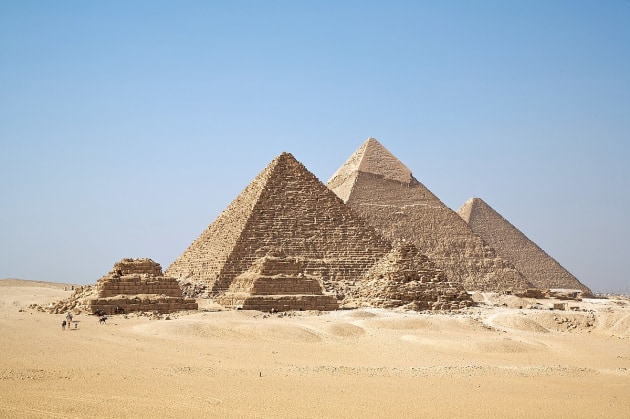
When was the Great Pyramid built?
It is believed by Egyptologists that the pyramid was built as a tomb for Fourth Dynasty Egyptian pharaoh Khufu and was constructed over a 20-year period. Based on these estimates, building the pyramid in 20 years would involve quarrying, transporting and placing approximately 800 tonnes of stone every day.
What materials were used to build the Great Pyramid?
Traditionally, Ancient Egyptians would cut huge stone blocks by hammering into them wooden wedges, which were then soaked with water. As the water was absorbed, the wedges expanded, causing the rock to crack. Once they were cut, they were carried by boat either up or down the Nile River to the pyramid.
Upon completion, the Great Pyramid was surfaced by white casing stones. These were slant-faced, flat-topped, and highly polished white limestone. The casing stones were carefully cut and placed to create a smooth surface.
Unfortunately, much of the casing stones were stolen away over time.
- In AD 1303, a massive earthquake loosened many of the outer casing stones, which were then carted away by Bahri Sultan An-Nasir Nasir-ad-Din al-Hasan in 1356 to build mosques and fortresses in nearby Cairo.
- Muhammad Ali Pasha removed many more in the early 19th century to build the upper portion of his Alabaster Mosque in Cairo, not far from Giza.
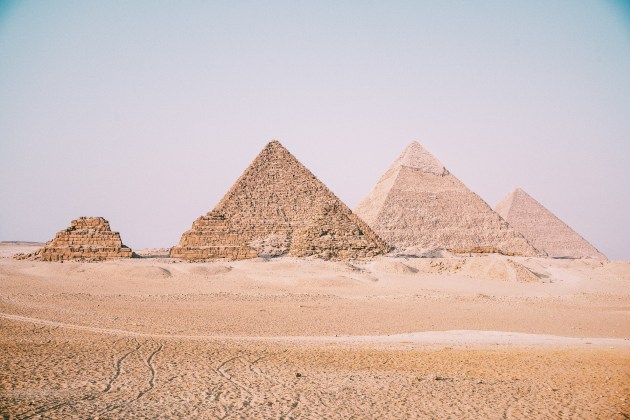
Later explorers, such as British archaeologists, reported massive piles of rubble at the base of the pyramids left over from the continuing collapse of the casing stones, which were subsequently cleared away during continuing excavations of the site.
Theories about how they built the Great Pyramid
Many theories have been proposed over the centuries regarding the pyramid’s construction techniques. Historians cannot agree on whether the blocks were dragged, lifted, or even rolled into place. The Greeks believed that forced labour was used, but modern discoveries made at nearby workers’ camps associated with construction at Giza suggest that it was built instead by tens of thousands of skilled workers.
Egyptologists estimated that the total project required an average workforce of about 14,500 people and a peak workforce of roughly 40,000, without the use of pulleys, wheels, or iron tools.
What is inside the Pyramid of Giza?
Let’s explore the intricate and historical inside of the Pyramid of Giza:
The entrance to the Pyramid
The original entrance to the Great Pyramid is on the north of the structure, standing 17 metres above ground level. From this original entrance, there is a Descending Passage which goes down at an angle through the masonry of the pyramid and into the bedrock beneath it.
There is a continuation of the horizontal passage that leads to a chamber close to the entrance, there is also a pit dug in the floor of the chamber. Some Egyptologists believe that this Lower Chamber was intended to be the original burial chamber, but Pharaoh Khufu later changed his mind and wanted it to be higher up in the pyramid.
The Queen’s Chamber
The Queen’s Chamber is exactly halfway between the north and south faces of the pyramid. At the eastern end of the chamber, there is a niche 4 metres high. The original depth of the niche was 1 metre deep but has since been deepened by treasure hunters.
In the north and south walls of the Queen’s Chamber, there are shafts, which, unlike those in the King’s Chamber that immediately slope upwards, are horizontal for around 2 metres before sloping steeply upwards, their purpose is unknown. At the end of one of the shafts, a ball of black diorite (a type of rock) and a bronze implement of unknown purpose were discovered by explorers.
One of the shafts was blocked by limestone doors with huge copper handles. In 2002, a team of explorers drilled a small hole in the southern door, to discover another set of doors behind it. The northern passage, which was difficult to navigate because of twists and turns, was also found to be blocked by a door.
The team later used a flexible camera that could see around corners to look deeper into the chamber. They discovered hieroglyphs written in red paint. They also found the reverse side of the door was finished and polished, which suggests that it was not put there just to block the shaft from debris, but rather for a more specific reason.
The Grand Gallery
The Grand Gallery continues the slope of the Ascending Passage towards the top of the pyramid. At the base, it is 2 metres wide.
The floor of the Grand Gallery consists of a step on either side, 51 centimetres wide, In the step there are 54 slots that form a cross shape rising out of the slot in the shelf. The purpose of these slots is not known, but the central gutter in the floor of the Gallery, which is the same width as the Ascending Passage, has led to speculation that the blocking stones were stored in the Grand Gallery and the slots held wooden beams to restrain them from sliding down the passage.
The King’s Chamber
The King’s Chamber is 10 metres from east to west and 5 metres from north to south. Raised from the floor, there are two narrow shafts in the north and south walls. The purpose of these shafts is not clear: they appear to be aligned towards stars or areas of the northern and southern skies. They were long believed by Egyptologists to be air shafts for ventilation, but this idea has now been widely abandoned in favour of the shafts serving a ritualistic purpose associated with the ascension of the Pharaoh’s spirit to paradise.
The only object in the King’s Chamber is a rectangular granite sarcophagus, one corner of which is broken. The sarcophagus is slightly larger than the Ascending Passage, which indicates that it must have been placed in the Chamber before the roof was put in place.
Historians do not know in reality if Khufu is entombed in the Great Pyramid of Giza.
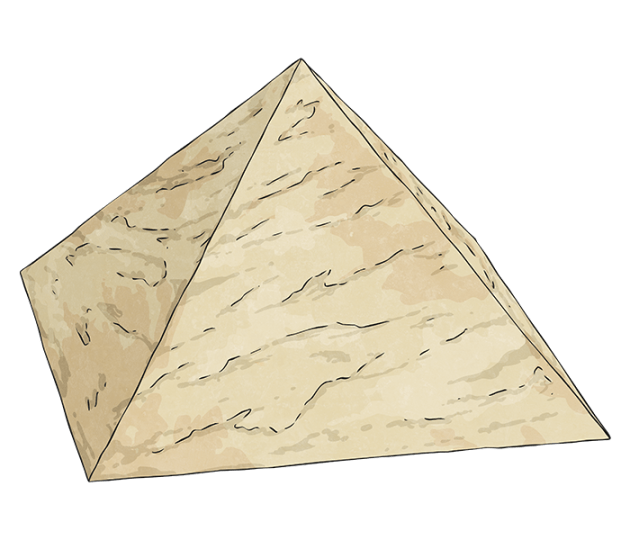
The Pyramid at Giza actually holds two burial chambers. One lies directly beneath the construction, as was the norm with other pyramids. The second burial chamber is placed at a height of about 42 metres, and is attached to many smaller chambers that haven’t been fully explored. Whether Khufu was buried in one of these chambers, or whether he died in such a way that his body was lost, we do not know.
The Robbers’ Tunnel
Nowadays, to get inside the Pyramid of Giza, you have to use what’s known as the Robber’s Tunnel. This tunnel was cut into the original masonry of the pyramid, around 7 metres above the base of the structure. The Robber’s Tunnel runs primarily in a straight, horizontal line for around 27 metres and then makes a sharp left turn as it hits the Ascending Passage.
Interestingly, the Robber’s Tunnel was not part of the original design of the Great Pyramid. This means that it was cut into the inside of the Pyramid of Giza in the years following its construction.
There are a couple of theories as to how the tunnel got made. The first theory argues that the Caliph Abdallah al-Mamun was responsible for its construction. The other theory, however, does not credit him with its build.
The first theory argues that the tunnel was built around 820 AD under the instruction and supervision of the seventh caliph, or ruler of the Islamic Empire, Caliph Abdallah al-Mamun. It is believed to have been built using a battering ram, which knocked down sections of the Great Pyramid.
The aggressive method used to build the tunnel caused the stone in the ceiling of the Descending Passage to be dislodged. As this stone fell, it blocked the entrance to the Ascending Passage, which was a major point of concern for the builders currently inside the Pyramid of Giza. When the stone was dislodged, it made a loud noise and slid down the Descending Passage, which signified to the builders that they should turn left. They attempted to move the stones, but it proved impossible. Their only option was to start digging up beside them, where the pyramid was built with softer limestone. They did this until they reached the Ascending Passage. Thus, the Robber’s Tunnel was formed.
The second theory on how the Robber’s Tunnel inside the Pyramid of Giza was constructed argues that the tunnel was actually just carved shortly after the pyramid was initially sealed. In this account of the tunnel’s construction, scholars believe that the tunnel was resealed some years later. If this theory is correct, it would mean that the Robber’s Tunnel already existed before Caliph Abdallah al-Mamun’s expedition ever took place. The Caliph’s workmen, then, would have just enlarged and expanded upon the tunnel as opposed to building it from scratch.
Pyramids of Giza facts
Dive deeper into this fascinating wonder of the Ancient world with these amazing Pyramids of Giza facts:
Fact#1: The Pyramid of Djoser was the first to be built
The first pyramid ever to be built was the Pyramid of Djoser, located in the Al Giza Desert. This pyramid was built for Pharaoh Djoser Saqqara south of Giza around the year 2630 BC as a burial place for the king.
The Pyramid of Djoser was a huge and impressive structure, with 6 distinct tiers and four sides.
Fact #2 The Great Pyramid was built after the Red Pyramid
The Red Pyramid was the third pyramid built by Pharaoh Sneferu between the years built 2575 and 2551 BC. The pyramid was constructed at the royal burial ground, Dahshur and stood at approximately 341 feet or 104 metres tall.
It was after the construction of the Red Pyramid that Pharaoh Khufu began building the Great Pyramid of Giza. Once complete, the Great Pyramid was the largest pyramid ever built in Ancient Egypt. It served as a tomb for all of Khufu’s wives and also contains a range of strange features, including a morgue, valley temple, boat pits, and a raised road.
Fact #3 The Pyramids of Giza have shrunk over time
When they were first built, the pyramids of Giza stood quite a bit taller than they do today, as they have eroded over time. For instance, when it was originally constructed, the Great Pyramid of Giza towered over 147 metres tall, but it now measures around 139 metres in height.
An iron triangle has been placed on top of the Great Pyramid to represent the capstone that once marked the peak of the structure.
Fact #4 The chambers of the pyramids lie empty
When they were originally built, the tombs underneath all of the pyramids were filled with both human remains and gifts for the dead to take into the afterlife. However, once the iconic structures were opened up to the public, lots of people came in and ransacked them, leaving the tombs completely empty. The only thing left is Pharaoh Khufu’s red-granite sarcophagus.
Even the white limestone casing that covered the outside of the pyramids was taken and used by different rulers in other building projects.
If someone were to rob a tomb nowadays, they wouldn’t find much of monetary value, but Ancient Egyptians were actually buried with lots of possessions. Pharaohs were buried with lots of treasure and even, at times, some of their enslaved peoples. Rulers in other lands knew of this and thus destroyed the pyramids and took all of the treasures back to their kingdoms. The evidence of many failed break-ins can be seen in a big hole that was made in the pyramid’s structure.
Fact #5 The pyramids were built by skilled workers
Despite the widespread narrative that the Pyramids of Giza were built by enslaved people, this was actually not the case. Experts have estimated that it would have taken at least 20,000 to 30,000 skilled workers, including masons, engineers, architects, surveyors, and other craftsmen to construct the Great Pyramid. All in all, it has been estimated that over 100,000 workers were involved in the construction of the Pyramids of Giza.
It is believed that these skilled craftsmen would have been working on the pyramid in different shifts all year round. This means that they would have been working during the summer months when the river Nile flooded the valley nearby. This event led to the integration of a permanent labour force.
Fact #6 The Pyramids of Giza are the oldest wonders of the world
The Pyramids of Giza are the oldest of the seven wonders of the world. They date all the way back to the year 2560 BC and are still in good condition to this day. The Pyramids of Giza are also the only remaining wonder of the Ancient world.
Fact #7 The Great Pyramid had an invisible door
Historians believe that, at one point, the Great Pyramid contained a swivel door that weighed a massive 20 tons. It was only possible to push this door open from the inside of the pyramid, and it was completely concealed from the outside.
This hidden entry was so well hidden that it was actually only discovered when the Great Pyramid began being studied by scientists. They uncovered two huge swivel doors, the opening mechanism for which is still a mystery to this day.
Teaching resources
Our high-quality, engaging teaching resources are the perfect way to teach kids some fun facts about the Pyramids of Giza. We have tons of materials to help your students learn all about the pyramids and other aspects of ancient Egyptian culture. Allow us to introduce you to a small selection of our top picks!
KS1
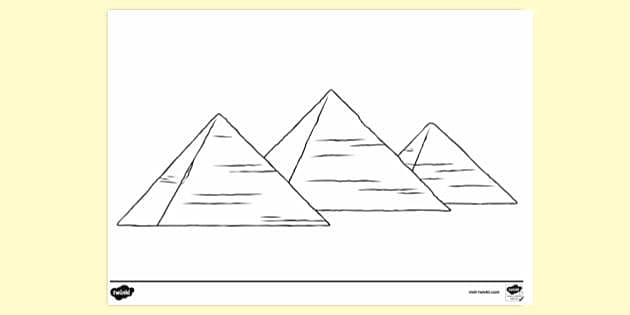
This Great Pyramid of Giza Colouring Sheet would make a soothing starter, introducing your young learners to the theme of a lesson all about the Pyramids of Giza. The mindfulness element of this activity could also help get them settled and ready to learn.
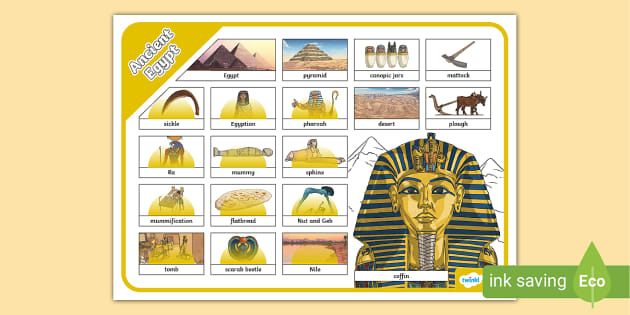
Our beautifully illustrated Ancient Egyptian Word Mat is ideal for use as a desk aid. Pupils can refer to it to help them extend their vocabulary and check their accuracy of spelling during independent written work.
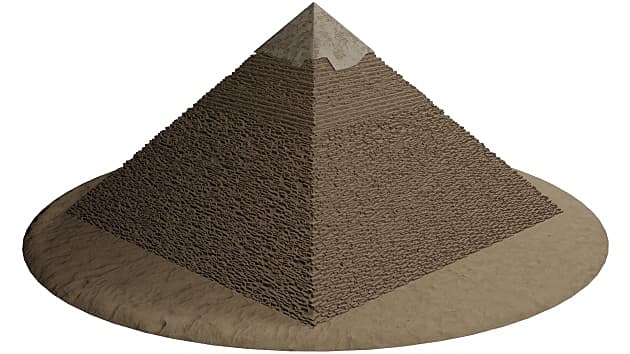
Perfect for visual learners, this The Great Pyramid of Giza Augmented Reality (AR) 3D Model will help to bring one of the Seven Wonders of the Ancient World to your classroom!
KS2
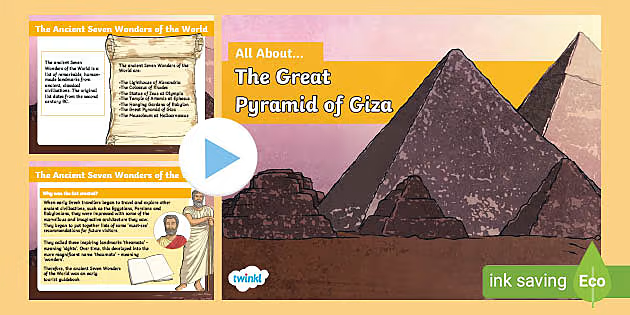
This engaging and informative KS2 All About the Great Pyramid of Giza PPT covers the three pyramids of Giza. It covers the building of the three pyramids, how they might have been built and by whom. Children will also be provided with information about the Queen’s Chamber and the King’s Chamber.
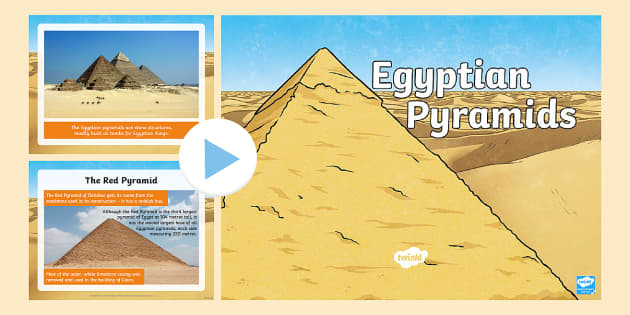
This teacher-made presentation is ideal for introducing your pupils to some of the most famous Egyptian pyramids, from the Pyramids of Giza to the Red Pyramid and the Bent Pyramid. To get started, simply click to download and display this fascinating Ancient Egyptian Pyramids Lesson PowerPoint.
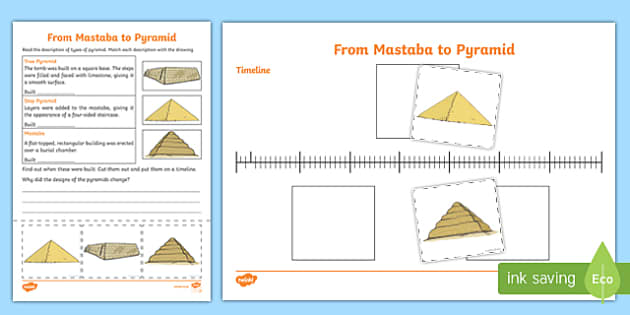
This Different Types of Egyptian Pyramid Worksheet provides you with a great opportunity to teach your young historians basic research skills. Why not take them to the school library or book a computer room? Once they’ve found out when each type of pyramid was built, they’ll be able to complete these lovely timelines.
If you found this Teaching Wiki about the pyramids of Giza useful, then you might like to take a peek at our other handy Teaching Wiki ‘What are the Egyptian Pyramids?’
